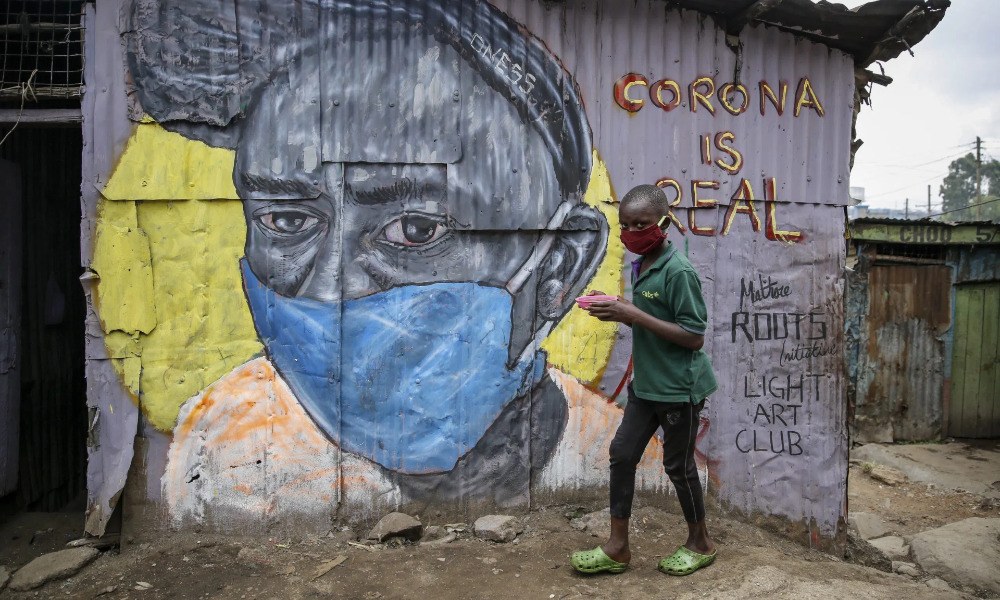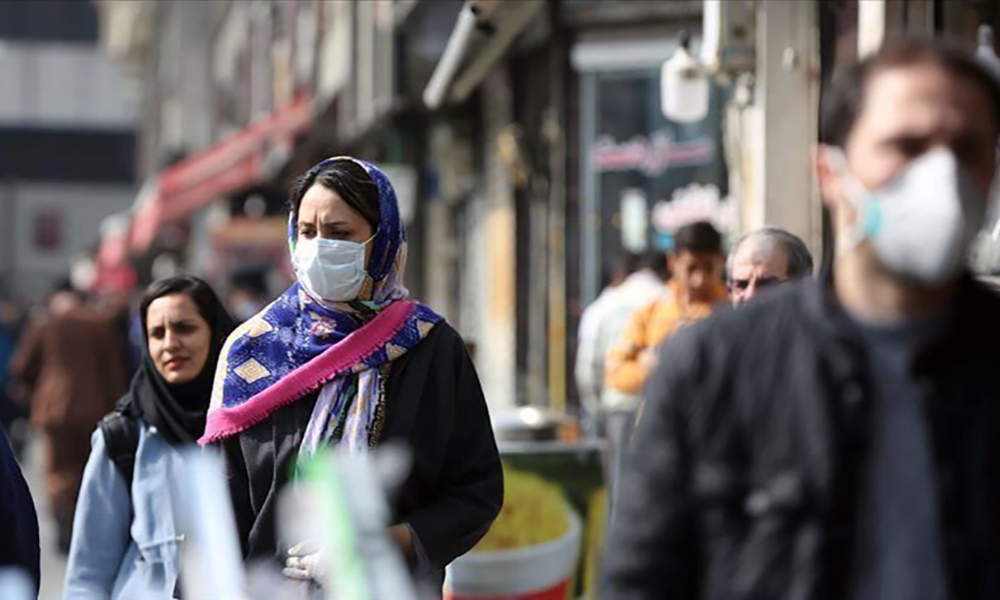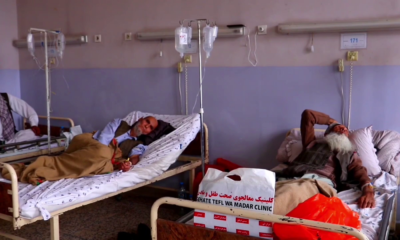COVID-19
Global COVID-19 cases surpass 226.8 mln, death toll tops 4.66 mln: WHO

The cumulative total of global COVID-19 cases increased to more than 226.8 million, with the death toll exceeding 4.66 million as of Friday, according to the World Health Organization (WHO).
There had been 226,844,344 confirmed cases of COVID-19, including 4,666,334 deaths as of Friday, the WHO’s COVID-19 dashboard revealed.
A total of 5,634,533,040 vaccine doses have been administered worldwide as of Tuesday, the WHO reported.
The cumulative total of confirmed COVID-19 cases in the United States neared 42 million as of Friday, with the death toll surpassing 672,000, according to the Center for Systems Science and Engineering (CSSE) at Johns Hopkins University.
Specifically, the country’s case count rose to 41,942,199 on Friday, the CSSE tally showed.
The United States continues to lead the world in the numbers of both confirmed COVID-19 cases and deaths.
Another 32,651 people in Britain have tested positive for COVID-19, bringing the total number of coronavirus cases in the country to 7,371,301, according to official figures released on Friday.
The country also recorded another 178 coronavirus-related deaths as the total number of coronavirus-related deaths in Britain now stands at 134,983.
These figures only include the deaths of people who died within 28 days of their first positive test.
The Robert Koch Institute (RKI) for infectious diseases, Germany’s federal disease control agency, said in its latest report released on Friday that the country registered 11,022 new infections and 20 new deaths within 24 hours.
A total of 4,125,878 COVID-19 infections have been officially registered in Germany since the outbreak of the pandemic, with the death toll climbing to 92,857 as of Friday, said the RKI.
Russia registered 19,905 new coronavirus cases over the past 24 hours, taking the nationwide tally to 7,234,425 infections, the official monitoring and response center said on Friday.
The nationwide death toll grew by 791 to 196,626 fatalities while the number of recoveries increased by 16,619 to 6,469,017.
Anna Popova, the head of Russia’s consumer rights and human well-being watchdog Rospotrebnadzor, said on Friday that the situation with the coronavirus in the country is stable but remains tense.
India’s COVID-19 tally rose to 33,417,390 on Saturday, as 35,662 new cases were registered during the past 24 hours across the country, the federal health ministry’s latest data showed.
An additional 281 deaths were also recorded since Friday morning, taking the death toll to 444,529.
Most of the new cases and deaths were reported from the southern state of Kerala.
Currently, there are 340,639 active cases in the country with an increase of 1,583 during the period.
The Philippines’ Department of Health (DOH) reported 23,134 new COVID-19 infections on Saturday, bringing the total number of confirmed cases in the Southeast Asian country to 2,347,550.
The DOH also reported 255 coronavirus-related deaths, raising the country’s death toll to 36,583.
Vietnam reported 11,521 new COVID-19 cases and 212 deaths on Friday, according to the country’s Ministry of Health.
The new infections brought the country’s total tally to 667,650, with 16,637 deaths, the ministry said.
Most of the community cases were detected in southern localities, including 5,972 in the epicenter Ho Chi Minh City, 4,013 in the nearby Binh Duong province and 345 in Dong Nai province.
COVID-19
WHO declares end to COVID global health emergency

The World Health Organization said Friday that COVID-19 no longer qualifies as a global emergency, marking a symbolic end to the devastating coronavirus pandemic that triggered once-unthinkable lockdowns, upended economies and killed millions of people worldwide.
The announcement, made more than three years after WHO declared the coronavirus an international crisis, offers some relief, if not an ending, to a pandemic that stirred fear and suspicion, hand-wringing and finger-pointing across the globe, AP reported.
The U.N. health agency’s officials said that even though the emergency phase was over, the pandemic hasn’t finished, noting recent spikes in cases in Southeast Asia and the Middle East.
WHO says thousands of people are still dying from the virus every week, and millions of others are suffering from debilitating, long-term effects.
“It’s with great hope that I declare COVID-19 over as a global health emergency,” WHO Director-General Tedros Adhanom Ghebreyesus said.
“That does not mean COVID-19 is over as a global health threat,” he said, warning that new variants could yet emerge. Tedros noted that while the official COVID-19 death toll was 7 million, the real figure was estimated to be at least 20 million.
Tedros said the pandemic had been on a downward trend for more than a year, acknowledging that most countries have already returned to life before COVID-19.
He bemoaned the damage that COVID-19 had done to the global community, saying the pandemic had shattered businesses, exacerbated political divisions, led to the spread of misinformation and plunged millions into poverty.
When the U.N. health agency first declared the coronavirus to be an international crisis on Jan. 30, 2020, it hadn’t yet been named COVID-19 and there were no major outbreaks beyond China.
More than three years later, the virus has caused an estimated 764 million cases globally and about 5 billion people have received at least one dose of vaccine.
In the U.S., the public health emergency declaration made regarding COVID-19 is set to expire on May 11, when wide-ranging measures to support the pandemic response, including vaccine mandates, will end. Many other countries, including Germany, France and Britain, dropped most of their provisions against the pandemic last year.
When Tedros declared COVID-19 to be an emergency in 2020, he said his greatest fear was the virus’ potential to spread in countries with weak health systems.
Most recently, WHO has struggled to investigate the origins of the coronavirus, a challenging scientific endeavor that has also become politically fraught.
COVID-19
COVID-19 in Iran: Nearly 900 new cases, 24 deaths recorded

The Iranian health ministry announced on Sunday that more than 890 new cases of COVID-19 have been identified across the country during the past 24 hours, adding that 24 patients have died in the same period of time, Fars News Agency reported.
“A sum of 891 new patients infected with COVID-19 have been identified in the country based on confirmed diagnosis criteria during the past 24 hours,” the Iranian Health Ministry’s Public Relations Center said on Sunday, adding, “454 patients have been hospitalized during the same time span.”
The ministry’s public relations center said 611 people infected with COVID-19 are in critical condition.
COVID-19
China says 200 million treated, pandemic ‘decisively’ beaten

China says more than 200 million of its citizens have been diagnosed and treated for COVID-19 since it lifted strict containment measures beginning in November.
With 800,000 of the most critically ill patients having recovered, China has “decisively beaten” the pandemic, according to notes from a meeting of the ruling Communist Party’s all-powerful Politburo Standing Committee presided over by President and party leader Xi Jinping, AP reported.
China enforced some of the world’s most draconian lockdowns, quarantines and travel restrictions and still faces questions about the origins of the virus that was first detected in the central Chinese city of Wuhan in late 2019. Heavy-handed enforcement prompted rare anti-government protests and took a heavy toll on the world’s second-largest economy.
The official Xinhua News Agency quoted Xi as saying that policies to control the outbreak had been “entirely correct.” The abrupt lifting in November and December of the “zero COVID” policy that had sought to eliminate all cases of the virus led to a surge in infections that temporarily overwhelmed hospitals.
Case numbers have since peaked and life has largely returned to normal, although international travel in and out of China has yet to return to pre-pandemic levels.
China is now transitioning to a post-pandemic stage after a fight against the outbreak that was “extraordinary in the extreme,” Xinhua said.
The government will continue to “optimize and adjust prevention and control policies and measures according to the times and situations with a strong historical responsibility and strong strategic determination,” Xinhua said.
-

 Sport5 days ago
Sport5 days agoACL draw to be broadcast live on ATN channels
-

 Regional5 days ago
Regional5 days agoIRGC chief warns of harsher response if Israel attacks Iran
-

 Sport4 days ago
Sport4 days agoACL fever grows as fixtures finalized
-

 World4 days ago
World4 days agoUS will not take part in any Israeli retaliatory action against Iran
-

 Latest News4 days ago
Latest News4 days agoOver 50 people dead in traffic accidents over Eid
-

 Latest News4 days ago
Latest News4 days agoUS identifies Kabul airport suicide bomber
-

 Business4 days ago
Business4 days agoAfghanistan-Kazakhstan chamber of commerce opens in Herat
-

 Latest News4 days ago
Latest News4 days agoGood rains enable DABS to increase power production in Kabul
























